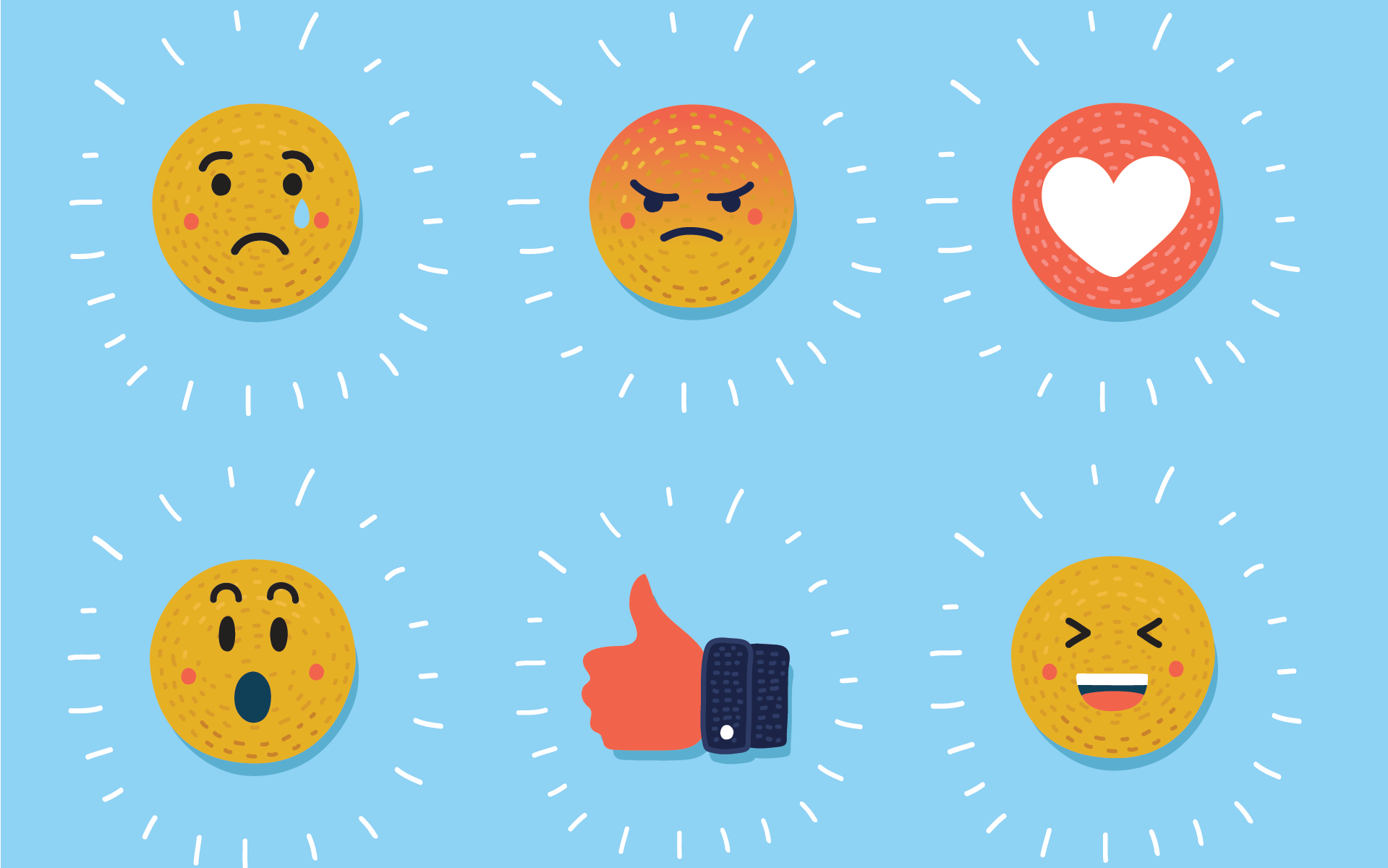It was a particularly difficult day. My then nine-month-old daughter had a terrible night and left my wife and I with only a handful hours’ sleep. Needless to say, we were slow getting up and out the door that morning. Before we left, my wife and I “discussed” who should’ve gotten up with Celia during the night (we’d been down this road before—these back-and-forths never help solve this issue, and somehow, we yet again veered this way). We barely spoke in the car the rest of the way to work after we dropped our daughter off at daycare.
And then I was hit by one issue after another once I walked into my office. An upset parent who’d left a voicemail who urgently needed to talk to me. A clinician who needed help dealing with a student in crisis. An important meeting I needed to chair that I’d forgotten to put in my calendar. And worst of all, I must have used a ladle to scoop my sugar into my coffee travel mug that morning.
Simply labeling a difficult emotional experience allows you to take the reins back, if only briefly.
I sat with my face in my hands at my desk for a moment. I was seething with what life had deposited on top of me. My temples were pulsing, and my clock said it was only 9:30. Somehow, I remembered what I’d recommended to clients many times, but usually forgot to do myself. It was a nice therapeutic “nugget” that made sense, but seemed like it should be innate to me, an experienced therapist: “Name it”—or as I’ve heard psychiatrist and mindfulness expert Dan Siegel say—“Name it to tame it.” In other words, say to yourself, out loud, what negative emotion you’re experiencing, as you’re experiencing it, in order to get some distance from it. As the clinical wisdom goes, simply labeling a difficult emotional experience allows you to take the reins back, if only briefly.
How Labelling Emotions Help Us Move On
I’d recommended this emotional labeling to clients for years, but I’m fairly certain I’d never tried it myself. Again, I was a therapist—this simple labeling practice was for my child clients to use. It was “Self-Management 101.” I thought I was far beyond such “basic” strategies—I was wrong, because I sat at my desk with distress rippling through me, my mind was electric with ranting, and I was on track for a less than effective, connected, and creative day. I needed to return to the basics.
The recommendation comes from a solid foundation. Research has shown that mere verbal labeling of negative emotions can help people recover control.[i] UCLA’s Matthew Lieberman refers to this as “affect labeling” and his fMRI brain scan research shows that this labeling of emotion appears to decrease activity in the brain’s emotional centers, including the amygdala. This dampening of the emotional brain allows its frontal lobe (reasoning and thinking center) to have greater sway over solving the problem du jour.
And this is where mindfulness comes in. Mindfulness gives us that moment of space as reactive emotions (like anger) are rising up. If we can see the anger, then we don’t have to be it—we can mindfully notice the body and mind crackling with reactivity, and acknowledge (or “name”) our emotions as we’re having them. Doing so seems to help us disengage from them. We can see them, and then we can begin to choose how to react instead of reacting under the sway of intoxicatingly strong emotions. We can choose to act to open ourselves and connect with others, rather than be carried away in a flood of emotional neurochemicals that wash us over the cliff.
A Mindfulness Practice to Manage Strong Emotions in the Moment
In the coming days, when you find your body and mind getting tense with upset (and the more you’re aware of exactly how this manifests in you, the better), encourage yourself to attach words to your experience.
Often, thinking in terms of the metaphor of your hand in front of your face can be helpful. When you start, you ARE your anger, sadness, fear, etc. It is your hand over your face. Can’t see anything, can you? The emotion is attached to you—it IS you.
As you progressively label your emotion, creating more and more “distance” between the raw emotion and “you,” the observer (sparking awake in your frontal lobe), begins to see things more clearly: the emotional “hand” moves farther away from your thinking and reasoning mind’s eye.
Don’t be discouraged when you find yourself swept away in emotional currents. Our emotional reflexes run deep and change comes only with significant practice and patience.
Here’s a possible domino effect of reactive thoughts that might show up for you:
- Event occurs
- Your body stiffens, clenches
- You think, “I can’t believe this!” / “They are so wrong!” / “This shouldn’t be!”
- You feel, “I am angry / sad / frustrated / humiliated / etc.”
- Your body stiffens and clenches even more
- You decide, “I’m going to let them have it!”
And now, naming the emotion right AFTER the body first stiffens, surges, or in some way alerts you that upset is here:
- You think, “My body is telling me I’m angry, sad, etc.” (deep, slow breath in)
- You recognize, “I’m having thoughts that this is upsetting.” (slow exhale out)
- You feel, “Anger . . . anger . . . anger . . .” (deep, slow breath in)
- Your body slows down (slow exhale out)
- You feel, “Sad . . . sad . . . sad . . .” (deep, slow breath in)
What do you notice?
You may notice a “distance” that develops as you label your thoughts and emotions after the initial event. Instead of reacting and either lashing out or shutting down, you (in a matter of seconds) can ignite your frontal lobe, slow your body and mind, and choose your response. You can connect with your experience, as well as the possibilities around you. Instead of digging a deeper hole, you can climb out of the episode.
Practice this labeling whenever you can. Don’t be discouraged when you find yourself swept away in emotional currents. Our emotional reflexes run deep (inside the brain), and change comes only with significant practice and patience. The practice is awareness: to get better at catching yourself. Labeling an emotion helps you create distance from it. From there, we can choose how to respond instead of being led by our triggers.
I still argue with my wife about who should go pick up my crying kids. I catch my rigid, “she’s so out of line” thinking more than before, and I put it out at arm’s length. More than ever before, I can choose to do something that binds us together instead of blasting us apart.
And if mindful labeling doesn’t work, as a husband, I’ve learned to simply stop talking and go clean something.
References
[i] 1. Putting Feelings Into Words: Affect Labeling Disrupts Amygdala Activity in Response to Affective Stimuli. Matthew D. Lieberman, Naomi I. Eisenberger, Molly J. Crockett, Sabrina M. Tom, Jennifer H. Pfeifer, and Baldwin M. Way. Psychological Science 2007;18(5):421-428.
Subjective Responses to Emotional Stimuli During Labeling, Reappraisal, and Distraction. Matthew D. Lieberman, Tristen K. Inagaki, Golnaz Tabibnia, and Molly J. Crockett. Emotion 2011;11(3):468-480.
Neural Correlates of Dispositional Mindfulness During Affect Labeling. J. David Creswell, Baldwin M. Way, Naomi I. Eisenberger, and Matthew D. Lieberman. Psychosomatic Medicine 2007;69(6):560-565.







